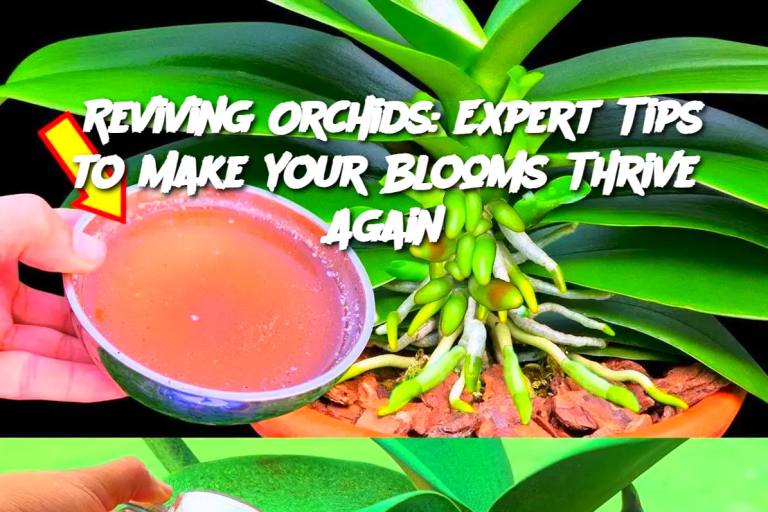ADVERTISEMENT
Introduction
Orchids are captivating flowers that can elevate any space with their elegant beauty. However, many people struggle with getting their orchids to bloom again after the initial flowers fade. If you want to keep your orchids blooming longer and enjoy their graceful presence in your home, it’s essential to know the best techniques for their care. This guide will walk you through some expert tips for reviving your orchid and ensuring it thrives for seasons to come.
Ingredients:
Healthy orchid plant (Phalaenopsis, Cattleya, or Dendrobium varieties work well)
Orchid fertilizer (low-nitrogen, balanced)
Water (preferably distilled or room-temperature tap water)
A well-draining orchid pot with holes
Orchid bark or sphagnum moss
Pruning scissors or shears
A humidity tray or room humidifier (optional)
Directions:
Assess the Orchid’s Health: Start by checking the health of your orchid. Remove any dead or yellow leaves, as they can divert energy from the blooming process. Cut the flower spike to a few inches above the base if it has turned brown or dried out. This will encourage the plant to focus on root development and new growth.
Re-pot Your Orchid (If Needed): If your orchid is growing out of its pot, re-pot it in a slightly larger container using fresh orchid bark or sphagnum moss. This ensures proper drainage and allows your plant to have enough room to grow healthy roots, which are essential for blooming.
Provide the Right Lighting: Orchids thrive in bright, indirect sunlight. Place your orchid in a location that receives plenty of light but is not exposed to direct sun, which could scorch the leaves. The ideal location is a windowsill with filtered light or under a grow light designed for orchids.
Watering Schedule: Water your orchid only when the potting medium feels dry to the touch. Over-watering can lead to root rot. Water the plant thoroughly until water drains out of the pot. Ensure the plant isn't sitting in excess water.
Fertilize Regularly: Use a balanced orchid fertilizer every two weeks during the growing season (spring and summer). During the fall and winter months, you can reduce fertilizing to once a month, as the orchid enters a dormant phase.
Maintain Proper Humidity: Orchids thrive in a humid environment. Consider placing a humidity tray filled with water and pebbles beneath the pot or using a room humidifier. Aim for a humidity level of around 40-70%.
Encourage Re-blooming: Once the orchid has finished blooming, provide a “rest period.” Cut the flower spike back to about an inch above the node where it started, and keep the plant in a slightly cooler environment (around 60-70°F). This temperature drop encourages the plant to bloom again.
Be Patient: Orchids typically take several months to rebloom, so patience is key. Continue regular care, including light, water, and fertilizer, and you’ll be rewarded with another beautiful display.
Serving and Storage Tips:
Display: Once your orchid begins to bloom again, showcase it in a well-lit area. Orchids are best displayed in environments with consistent temperatures and away from drafts.
Temperature Control: Orchids are sensitive to extreme changes in temperature. Keep them away from heating vents or air conditioners to avoid stress that could harm the plant.
Storage: If you need to store an orchid during the winter, place it in a cool but protected area. Ensure it has some access to light, but keep it out of direct sunlight to prevent overheating.
Variations:
ADVERTISEMENT
